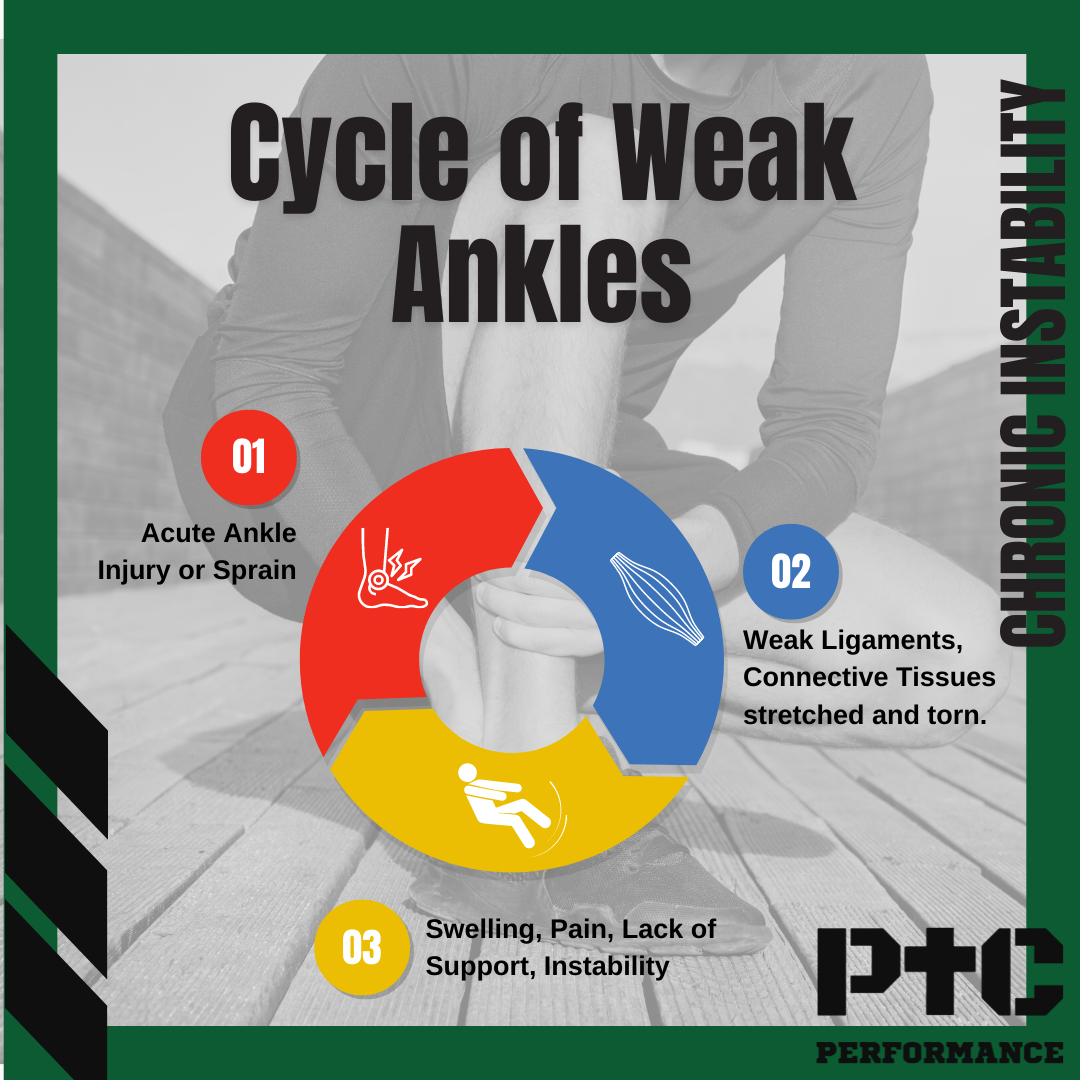Weak Ankles? Or Chronic Ankle Instability? The Social Norm That Isn’t Normal.
Have you experienced several ankle sprains? Do you ever use the phrase “I just have weak ankles!”? What if I told you that there’s a connection between the two and you’re to blame…?
The social norm that isn’t normal
It is not uncommon for athletes at any level - from the playground to the professional arena - to experience ankle sprains. But 2 out of 10 people who suffer from an acute ankle sprain find themselves having “weak” or “clumsy” ankles since the initial ankle sprain (Santos-Longhurst 2019).
But here’s the truth, more than 25% of athletes (especially those playing soccer, basketball and volleyball) don’t just have weak ankles, they have Chronic Ankle Instability (Kim, Best & Aiyer 2017).
Chronic ankle instability (CAI) is a condition characterised by repetitive episodes of the ankle giving way; ongoing symptoms such as pain, weakness or reduced ankle range of motion (ROM) and recurrent ankle sprains that persist for more than 1 year after the initial injury. (Hertel et al 2019). CAI leads to negative effects on quality of life, ankle functionality, and increasing risk for recurrent ankle and sprains and even post-traumatic osteoarthritis (Kim, Best & Aiyer 2017; Lin, Mayer & Wippert 2022).
The social norm of calling it JUST an ankle sprain or JUST weak ankles, is really not normal at all!
So we are going to help you break this vicious cycle, once and for all!
How do I know if I have CAI?
CAI can develop after an ankle injury, especially if the only treatment is to “walk it off.” It can lead to your ankle repeatedly “giving way” when performing common activities like walking, running, playing sports or other physical activities.
When you sprain your ankle, the connective tissues are stretched and/or torn and therefore cause ankle pain, swelling, lack of balance and the feeling of unstable ankles for an extended period of time. Returning to activities such as sports or even running, as they require a lot of stability through the ankle can unfortunately result in another ankle sprain.
CAI can develop after an ankle injury, especially if the only treatment is to “walk it off”
Below is a list of symptoms that may help indicate the presence of CAI:
Pain or tenderness on ankles and feet
Persistent (chronic) discomfort and swelling
Frequent ankle sprains or injuries
Balancing problem due to ankle feeling wobbly or unstable
Ankle repeatedly twisting outwards when walking, on uneven surfaces or when participating in sports
(Santos-Longhurst 2019; ACFAS 2019)
What athletes need to do with CAI
Athletes need to understand that their lack in respect and blatant neglect is to blame for their recurring ankle sprains. As seen in the diagram above, it’s a cycle.
Following simple strategies like avoiding ankle injuries and seeking early treatment if you do injure your ankle can help keep yourself healthy and play longer on the field injury-free!
If you suspect that you have CAI, there are several treatment options available. These include physical therapy, bracing and consulting a surgeon.
The first thing to do is to find the right physiotherapist. They can help assess the extent of the injury, provide the right advice on the dos and don’ts and prescribe necessary treatments that will help you at your current capacity.
Are you worried that you might have CAI? Contact us here!
Bibliography/References
ACFAS 2019, Chronic Ankle Instability - Foot Health Facts, Foothealthfacts.org.
Kim, K-M, Best, TM & Aiyer, A 2017, ‘How Do Athletes with Chronic Ankle Instability Suffer from Impaired Balance? An Update on Neurophysiological Mechanisms’, Current Sports Medicine Reports, vol. 16, no. 5, pp. 309–311.
kkpr 2020, A Revolutionary Solution to Chronic Ankle Instability - The Frankel Foot & Ankle Center, frankelfoot.com, viewed 12 September 2022, <https://frankelfoot.com/blog/treatments/solution-to-chronic-ankle-instability/>.
Lin, C-I, Mayer, F & Wippert, P-M 2022, ‘The prevalence of chronic ankle instability in basketball athletes: a cross-sectional study’, BMC Sports Science, Medicine and Rehabilitation, vol. 14, no. 1.
Santos-Longhurst, A 2019, Weak Ankles: Exercises, Causes, Symptoms, and Treatment, Healthline.
Hertel, J., & Corbett, R. O. (2019). An Updated Model of Chronic Ankle Instability. Journal of athletic training, 54(6), 572–588. https://doi.org/10.4085/1062-6050-344-18

